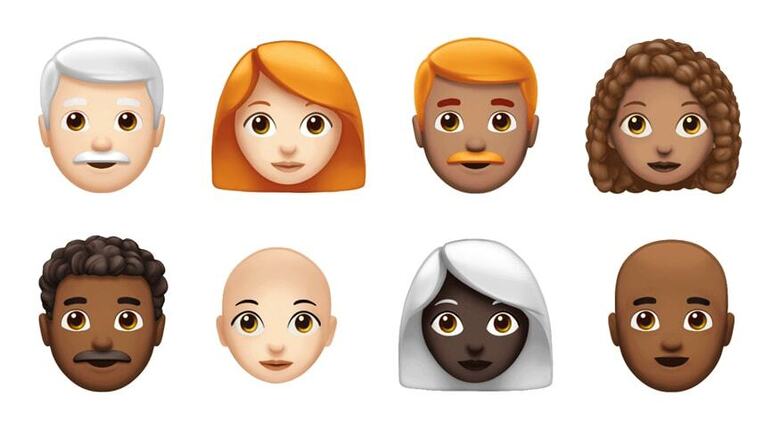
views
As they say, sometimes some things come full circle. That is perhaps the reason why a perhaps more primitive form of communication—visual characters—is extremely popular with smartphone totting millennials. These tiny emotive characters, known as emojis, representing people, things, expressions, objects and even situations, are being used to convey something in a single tap of the touchscreen, rather than realms of the written word. As we speak, Apple has on the occasion of what is known as the World Emoji Day (July 17 is the unofficial day for celebrating the emoji), confirmed that they will be rolling out 70 new emojis for the iPhone, iPad, Apple Watch and Mac computing devices in a software update later this year. The representation is improving, with more faces, expressions, the animal kingdom and even the superhero community getting adequate representation.
Also Read: Top 5 Gadgets to Spend on During Amazon Prime Day Sale
The emojis first appeared in pagers and phones in Japan in the late ‘90s, but then again, that was a time when Japan was showing us the way with smartphones. NTT Docomo first began experimenting with emojis in 1995, when they added a heart symbol to their pagers. These were designed by Japanese artist Shigetaka Kurita, and those original 176 emojis are now a part of the permanent collection at New York’s Museum of Modern Art.
Remember the beautiful flip phones that you bought much later? The Japanese had pretty much been using that design of phones for many years by then. And they showed us the way for emojis too. Through the mid-2000s, phone makers found one way or the other of implementing emojis in their phones. The big guns were also taking note. Apple had become active, and so had Google. The latter pushed to get get emoji recognized by the Unicode Consortium, a non-profit corporation that is devoted to developing, maintaining, and promoting software internationalization standards. This also includes the Unicode Standard, used for emojis. At the same time, Apple engineers were pushing to get 625 new emoji characters adopted into the Unicode Standard.
Watch: World Emoji Day | Commonly confused Emojis
Also Read: Top 5 Coloured Android Smartphones Across All Budgets
iEmoji, a forum dedicated to this visual form of communication, makes a fine distinction between emojis and emoticons. While emoticons are “a group of characters to represent an emotion", an emoji (Japanese for picture word) can be used to describe faces, activities, mood, weather, emotions or even places. If you are on a flight, you can simply reply to someone sending a message with an emoji of an aircraft, and they’ll know you are traveling. If someone in your team is falling behind a submission deadline, simply send a clock emoji instead of written words which could potentially be perceived unpleasantly.
In the meantime, phones kept adopting emoji characters, and people started replacing text with these in conversations with friends over instant messaging apps. It was only in 2011 that Apple integrated emojis into the on-screen keyboard app on the iPhone—till then, emojis were available in separate apps, which could be copy-pasted into a message and sent. Android did the same integration a couple of years later.
In 2014, the White House Council of Economic Advisors released a report on the education, debt, and healthcare status of millennials (defined by the report as “mostly in their mid-20s) with generous use of emojis to get their point across. For instance, the clapping emoji was used to depict education data, while an iPhone emoji signified the technology data and an ambulance emoji represented the section which talked about the healthcare options.
Also Read: Samsung Offers Discounts of Upto Rs 16,000 on Galaxy Note 8 And Galaxy S9+
Emoji however got its biggest boost in 2015, when the ‘Face with Tears of Joy’ emoji became the Oxford Dictionaries Word of the Year. The Oxford University Press had partnered with Swiftkey, a popular keyboard app for smartphones, and discovered that this particular emoji was the most popular with users globally.
Every year, the Unicode Consortium approves new emojis—the emoji language is now a full-fledged language. Along the way, there have been multiple attempts to ensure diversity is represented—a woman wearing a hijab, a man with a turban, a woman cradling a baby and a variety of skin tone options as well.
Emojis are taking on newer evolutions as we go along. There is the Animoji feature in the Apple iPhone X, which uses the device’s complex set of front facing cameras and sensors to register facial expressions, movement and voice to create an animation. You can choose to be a monkey, a cat, a dog, a panda, a rabbit or even a pile of poop (why you would want that, we really don’t want to know!). Next up is Memoji, which lets you create an animated avatar of yourself—right down to the freckles on the skin, the hair style and colour, accessories such as sunglasses and more.
Can we just say “RIP Text" and follow that up with a ‘Face with Tears of Joy’ emoji?















Comments
0 comment